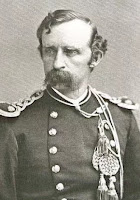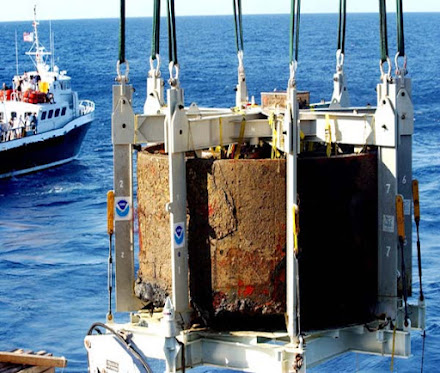National Park Service technicians will bring new life to the bronze Virginia Memorial at Gettysburg, applying a patina that will remedy its current dull and flat finish.
The 41-foot memorial,
dedicated in 1917, was the first Confederate state monument at Gettysburg
National Military Park, and it came with controversy. Union veterans objected
to its construction and officials had to walk a tightrope regarding its
inscription.
The park on
Monday provided details of the preservation project, which will begin by Sept.
6 and conclude by Sept. 30. It said the current brown ferric patination,
applied in the 1980s, has failed in many areas and left the memorial with “little
to no depth when viewed.”
Patinas bring
a creative effect and highlight striking features of a work.
“It’s used to accentuate pieces, provide contrast, imply age, introduce
color to the bronze, and sometimes to add a dose of reality to our detailed
statues,” according to the Randolph Rose Collection, which makes bronze
pieces. (It is not involved in the Gettysburg project).
The NPS said the existing brown patina on the Virginia memorial is not original to the work. The agency’s Historic Preservation Training Center will correct appearance and wear issues by removing the current sealer, patina and corrosion. (NPS photos above, below. Click to enlarge)
“When reduced to a bare metal surface, a patina of sulphurated potash will be applied, and this surface will be sealed with clear microcrystalline paste wax. The use of a sulphurated potash patina has been historically documented on work at Gettysburg NMP and is very stable for outdoor exposure. The new patina will result in a darker finish that is historically correct and is the primary sealer in use for bronze elements throughout the park’s monument collection.”
The memorial honors the 20,000 Virginians who fought at Gettysburg and
their commander, Gen. Robert E. Lee. The general and his horse Traveler look
toward the area of Pickett’s Charge, the disastrous failed attack on July 3,
1863. Below them are figures representing artillery, infantry and cavalry.
The American Battlefield Trust has a detailed article on the monument’s
history and how its backers helped perpetuate the Lost Cause narrative rather than
reunification.
In 1912, Virginia submitted this proposed inscription:
VIRGINIA
TO HER SOLDIERS AT GETTYSBURG
THEY FOUGHT FOR THE FAITH
OF THEIR FATHERS
 |
| The monument as it appeared in the 1920s (National Park Service) |
The approved
wording was:
VIRGINIA
TO HER SONS AT GETTYSBURG
The
monument was designed and sculpted by Frederick William Sievers.
He
used photographs and a life mask to capture the features of Lee’s face,
according to the Gettysburg Daily website.
“Those who knew Lee, and who were living at the time of the monument’s dedication, thought this sculpture was the best likeness of the general,” Gettysburg Daily says.
“Traveler’s bones were on display in Lexington, Virginia, where Lee had
settled before his death. Sievers found a live horse that matched the size and
shape of the bones as a model for Traveler.”
From the NPS: The immediate grass circle around the memorial
will be closed during this project. The circle drive around the memorial is
expected to remain open with intermittent closures to facilitate the work and
visitor safety.

















